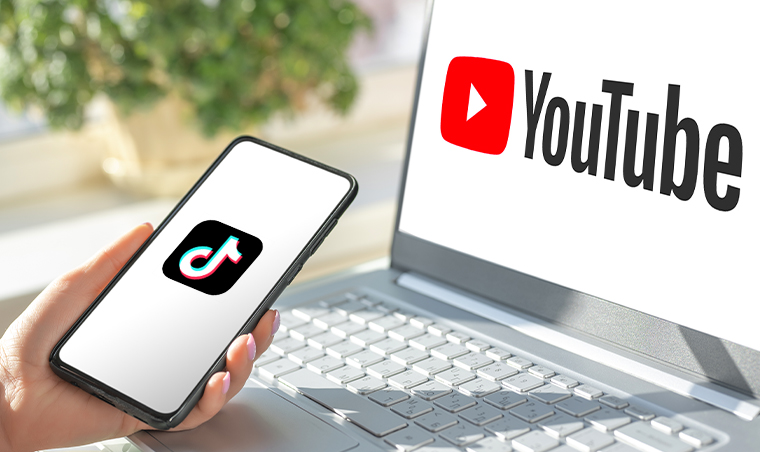
Public Relations runs the gamut of media, marketing, and outreach through various venues.
It’s such a broad and varied process that it’s easy to get lost in the weeds, focusing on techniques that barely work, ignoring prominent forms of outreach, and barely making headway.
You can circumvent this inefficiency by creating and following a PR plan. It’s not even terribly difficult to make a PR plan; it just requires knowledge of the overall world of PR. Luckily, you have people like us on your side. Here’s how to write a PR plan for your business.
Don’t worry; while it looks complicated, you’ve likely done much of the groundwork already.
Know What a PR Plan Is (and Isn’t)
A PR plan is a document that you can quickly create on your own, and it serves as an outline and a framework you can use to interact with the various people relevant to your business. It guides your interactions with your company’s audience, customers, and stakeholders. A central PR plan helps ensure consistent storytelling, brand voice, and presentation.
PR plans can be short-term or long-term. You should have both. One overarching PR plan guides your marketing and communications for your business, agnostic of time, events, or one-off happenings. Then, localized PR plans help you capitalize on holidays, sales, and new product releases.
The key is that any sub-plan is structured and guided by your overall business PR plan.

The PR plan has many benefits for a company. It helps create and maintain consistency with the stories and narratives you work into your marketing. It maps out what channels your brand will use, how you plan to use them, and to what ends. It can even schedule how you use various channels and reach multiple groups of people throughout the years to come.
A PR plan is many things, but there are also many things it is not.
- A PR plan is NOT a marketing plan. PR and marketing are adjacent and often run in parallel, informed by one another. Many techniques used in marketing are also used in PR. However, there’s one key difference. A marketing plan generally focuses on promoting a product or service while implicitly building brand awareness. A PR plan focuses on growing the brand and building brand presence while implicitly promoting the brand’s products.
- A PR plan is NOT a Reputation Recovery plan. PR is often a tool used when a PR disaster occurs. A data breach, an employee that was caught in a scandal, or a significant flaw in the product; these examples are all PR disasters. But, a PR plan is not a specific plan to handle and recover from a catastrophe. A reputation recovery plan is used to mitigate the damage to the status quo established by the PR plan.
- A PR plan is NOT inflexible. Developing a PR plan is building a scaffold upon which your message is constructed. However, that scaffold is not rigid or resistant to change. Your PR plan should be resilient to minor ebbs and flows of interest and market pressure, but it should also be adaptable as a living document. When a significant event occurs, your PR plan adapts when a new chapter is added to your story.
Now, how do you create a PR plan?
Step 1: Define Your Brand Elements and Audiences
Here’s a secret.
There’s no such thing as a brand.
A brand is shorthand for collecting a person’s thoughts, feelings, perceptions, and experiences with your company.
Thus, a brand has two key attributes: it varies from person to person and it evolves over time.
When you think of Disney, the brand you think about is very different from when an 11-year-old girl thinks of Disney, which is very different from how a veteran of the animation industry thinks of Disney. Disney has a branding and PR strategy that, no doubt, encompasses all of these other groups and many more besides. They’ve worked very hard to build and cultivate that brand, and they want you to feel a particular way when you hear the word “Disney”; the association with family, fun, magic, adventure, safety, happiness, and so on.

A brand also varies based on your experiences with the brand, your concerns about the brand and the world it inhabits, and other contextual elements. You might have a positive impression of a food brand, but it may diminish your perception of it if one of its products gives you food poisoning.
A business PR plan must understand these different audience segments and how the brand is positioned in each element. In broad strokes, you might define segments such as:
- The Consumer Brand. This is the branding you have with the overall segment of your target audience. You can further break this up into different customer segments.
- The Financial Brand. This is your branding with investors, banks, and other financial institutions.
- The Employer Brand. This is your branding with the people you hire to work for you.
- The Community Brand. This is how you position yourself as a contributor to local or national charities, volunteer work, community support, and other aspects of social context.
All of these are interlinked, of course. A company that wants to position itself as a green-focused, carbon-neutral entity will have that narrative worked into interactions with all of these audience segments, but how they’re presented will vary.
Each of these audience and brand elements deserves a PR plan of its own, and they can be quite complex to create. Don’t worry about trying to do them all at once. Pick one, develop it over a quarter, and build the next one based on the work of the first.
Step 2: Define Target Audiences
Your PR plan must define different audience segments within that overall brand element. Building out buyer personas and target audiences is crucial in PR planning, marketing, outreach, and more, so it should be familiar to you.

To define an audience, determine the key attributes that make that audience stand out.
- Demographics. What are their age range, their gender, their education, income levels, their occupations?
- Location. Where is this audience primarily located?
- Interest. What are they interested in, in general, and concerning your brand? What are their hobbies, their passions?
All of this helps you determine your messaging. It also determines the kinds of narratives and stories that resonate with them. How you address young single mothers is likely very different from how you would target older executives, as those two groups might be interested in entirely different products or services.
You are likely familiar with this process when defining buyer personas for your marketing, but remember, too, you’ll be defining personas for a disinterested community, investors, potential employees, and much more. It all depends on the segment of the brand you’re working on.
Step 3: Decide on Key Messages
You’ve chosen a brand segment. You’ve defined your audiences. Now you need to know the salient points you’re trying to make. Each key message should be a single sentence that is memorable, easy to parse, engaging, tailored to your target audience, and conveys an aspect of your branding you want that audience to grasp.

If you’re unsure what kind of message you want to convey, think about the most interesting, relevant, and essential aspects of your product and branding and how you might bring those to your audience in a way that resonates with them.
There’s no shortcut to this.
You can use various services for focus groups and market testing, but there’s only so much information you can gather, and they can only give feedback on your ideas. It would help if you still came up with the ideas yourself.
Step 4: Identify Communications Channels
You know your audience, and you know your message. One last element to define is how to get the news to the audience.
To do this, you need to know what venues your audience uses to get their news. Some might use news sites like Forbes. Some might get most of their information from YouTube or TikTok.

Some spend every waking moment on Twitter. Some still spend most of their time watching TV. Some read blogs only when shared on social media or in a discovery feed.
If this sounds familiar, it, too, is pulled from marketing. The audiences may be the same; the messaging is what changes. Again, the two run parallel, and you may already have much of this legwork done through your marketing efforts.
Step 5: Put It All Together
Concepts are all good, but you need to create an actual document with a solid plan you can follow. How do you do this? The simple version is a spreadsheet.

A sample layout of a spreadsheet has numerous columns, which you can use, add to, and roll through as you implement your plan. Columns should include:
- Date: This is when you implement a particular messaging campaign, which can be a start date or a date range.
- Story: This is the name you assign to your message campaign. For example, remember the Ice Bucket Challenge? It was an extremely effective PR campaign. This column would have something like “Ice Bucket Challenge” listed.
- Brand Segment: This is the overarching kind of branding you’re pursuing with this story, such as investors, customers, or employees. One campaign can have more than one target it reaches, but you want to be as specific as possible.
- Audience: This is your defined target audience for your message within the brand segment. You can use keywords or names for personas here, as long as you have them more defined in other documents. Like segments, this can have multiple audiences as a target, but you still want to be as narrow as possible.
- Key Message: This is the critical bit of information or messaging you want to get across, as defined above.
- Channel: This is the channel you’re using to convey your message to your audience. These include YouTube, Local News, Print, and so on.
- Venue: These are the specific places within your channels. If you list Print, this defines newspapers, magazines, or mailers. If you list YouTube, this determines what channels. If you list news websites, this specifies which sites. Some cases may even require subsections of those sites – the Forbes Small Business section, for example.
- Content type: This is the media you use to convey your message. Is it a video? Is it a short video or a long one, a round-up or a deep dive, etc.?
- Frequency: How often are you reaching your audience with this entry on your plan? Is it a one-time publication or a recurring segment?
- Contact: If you’re performing outreach or relying on working with an editor or site owner, or media contact, this is where you list that person’s information.
When you fill this out, you have a PR plan. Put together as many combinations of the messaging, audience, and channel as possible, cover your bases and saturate your market. Then, keep it up. Remember, again, that this is a living, evolving document. Your plan needs to adapt to its successes and failures.
Step 6: Get Professional Assistance
Putting your PR plan into action may require considerable effort. Your content creation and outreach teams are working to get your message in front of the right people.

Why not get some help while you’re at it?
At PR Fire, we’re specialists in conveying your messaging to people and venues where it counts. Our services give you coverage on high-powered websites, journalists, reporters, and more.
We help anyone from small businesses to massive Fortune 500 companies reach a vast new audience and get featured on some of the world’s most prominent news outlets. So, if you’re interested in getting your messages in front of the right people every time, you’re in the right place. If you have any questions, please drop us a line – we’d love to hear from you.
